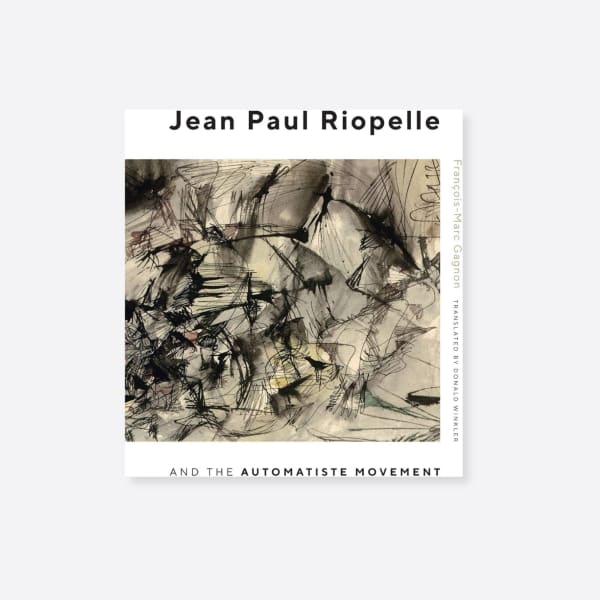Jean Paul Riopelle: Visual Exploration
Corkin Gallery presents Jean Paul Riopelle: Visual Exploration, opening Saturday, April 20, 2024. This focused survey offers the enduring oeuvre of the esteemed abstract master, Jean Paul Riopelle, spanning from the 1940s to the 1990s. It delves into his experimentation with gesture, form, and chromatic perception, featuring acclaimed paintings from the 1940s to the 1960s alongside a noteworthy selection of works on paper from the late 1940s to the 1990s.
Bringing together seminal works from the 1940s to the 1970s, many of which were first exhibited in France or America, and came from private collections. The exhibition commences with Abstraction #72, 1945, a Fauvist seascape with rhythmic strokes revealing his early trace into abstraction. The narrative then unfolds to encompass a series of ink and watercolour pieces from 1947 to 1948, inspired by his encounters with Surrealism. These works present a colourful background offset by bold applications of ink, creating a network of coloured spots connected by lines that appear to be thrown across the paper. Notably, his ink and watercolour works gained attention at the sixth International Exhibition of Surrealism organized by André Breton and Marcel Duchamp at Galerie Maeght in Paris in the summer of 1947, marking the last major Surrealist exhibition.
The vibrant filaments streaking across its surface on Composition, 1949, was included in 1967 at the Metropolitan Museum of Art, Summer Loan Exhibition: Paintings from Private Collections, curated by Theodore Rousseau. The work subtly resonates with the famed drip paintings of Jackson Pollock, yet maintains a connection to the millennia-old tradition of easel painting.
In the 1950s, Riopelle explored a new relationship between colour and form with his mosaic technique, expanding the potential of abstraction. Through the use of the palette knife, each dab of colour became a sculptural character. This development is evident in Couleur, 1955, which debuted at the 1955 exhibition Recent Paintings and Watercolours at Pierre Matisse Gallery, founded by the youngest child of the French Impressionist and Fauvist artist Henri Matisse.
From the late 1960s onward, Riopelle found inspiration in his return to the wilderness of Quebec. He explained, 'Abstract: abstraction, pulling from, taking from... I take the opposite approach. I do not take from Nature; I go towards Nature'.¹ His profound connection particularly with nocturnal birds and snow geese, is manifest in Sans Titre, 1968, where they had become recurring motifs in his later works.
Starting in the late 1960s and the early 1970s, Riopelle became fascinated by Inuit string games called ajaraaq in Inuktitut. You may remember cat’s cradle and Jacob ladder, the string games from camp. But you may not know the origin. Emulating this Inuit form of play, Riopelle presents supple black lines, almost alive, that wriggle along the surface of the multilayered composition; a textured background subtly echoes these dominant shapes.
Riopelle was interested in the 2000-year-old mythological being - Le Roi de Thulé. This myth originated in Alaska and traveled south to the Canadian Arctic. Riopelle’s fascination with the myth culminated in a series which he began by rubbing the face of tree trunks.
Celebrated among the second generation of postwar abstract painters, Riopelle has left an indelible mark in transition from Automatism to Abstract Expressionism in the post-war era. Emerging as one of the first Canadian artists to achieve international acclaim, his success culminated in recognition at the Venice Biennale in 1952, 1954, and 1962, an honourable mention for the Guggenheim International Award in 1958, UNESCO Prize in 1962, and a solo exhibition at the National Gallery of Canada, Ottawa in 1963. Major exhibitions of his works were held at the Kölnischer Kunstverein in Cologne in 1958, the Musée du Québec in Quebec in 1967, and Galerie Maeght in Paris in 1972. As part of centennial celebration of his birth, the National Gallery of Canada opened a major retrospective exhibition from October 2023 to April 2024. His works are housed in public collections such as the National Gallery of Canada, Tate London, the Art Institute of Chicago, and the Peggy Guggenheim Collection in Venice, among others.
¹. The artist quoted in: Y. Riopelle, Jean Paul Riopelle. Catalogue raisonné 1939-1953. Tome 1, Montréal, 1999.
-
 Jean Paul Riopelle, Sans titre, 1969
Jean Paul Riopelle, Sans titre, 1969 -
 Jean Paul Riopelle, Sans titre, 1945
Jean Paul Riopelle, Sans titre, 1945 -
 Jean Paul Riopelle, Sans titre, 1958
Jean Paul Riopelle, Sans titre, 1958 -
 Jean Paul Riopelle, Sans titre, 1947
Jean Paul Riopelle, Sans titre, 1947 -
 Jean Paul Riopelle, Sans titre, 1959
Jean Paul Riopelle, Sans titre, 1959 -
 Jean Paul Riopelle, Avion À Ski, 1972
Jean Paul Riopelle, Avion À Ski, 1972 -
 Jean Paul Riopelle, Composition, 1949
Jean Paul Riopelle, Composition, 1949 -
 Jean Paul Riopelle, Le Roi de Thulé 17, 1973
Jean Paul Riopelle, Le Roi de Thulé 17, 1973
-

Riopelle: In Search of Indigenous Cultures and the Northern Canadian Landscape
Bondil, Nathalie/Roy, Adreanne, 2021HardcoverRead more -

Jean Paul Riopelle and the Automatiste Movement
François-Marc Gagnon, 2020Softcover 224 pagesRead more
Publisher: McGill-Queen's University Press
Dimensions: 8 x 10









